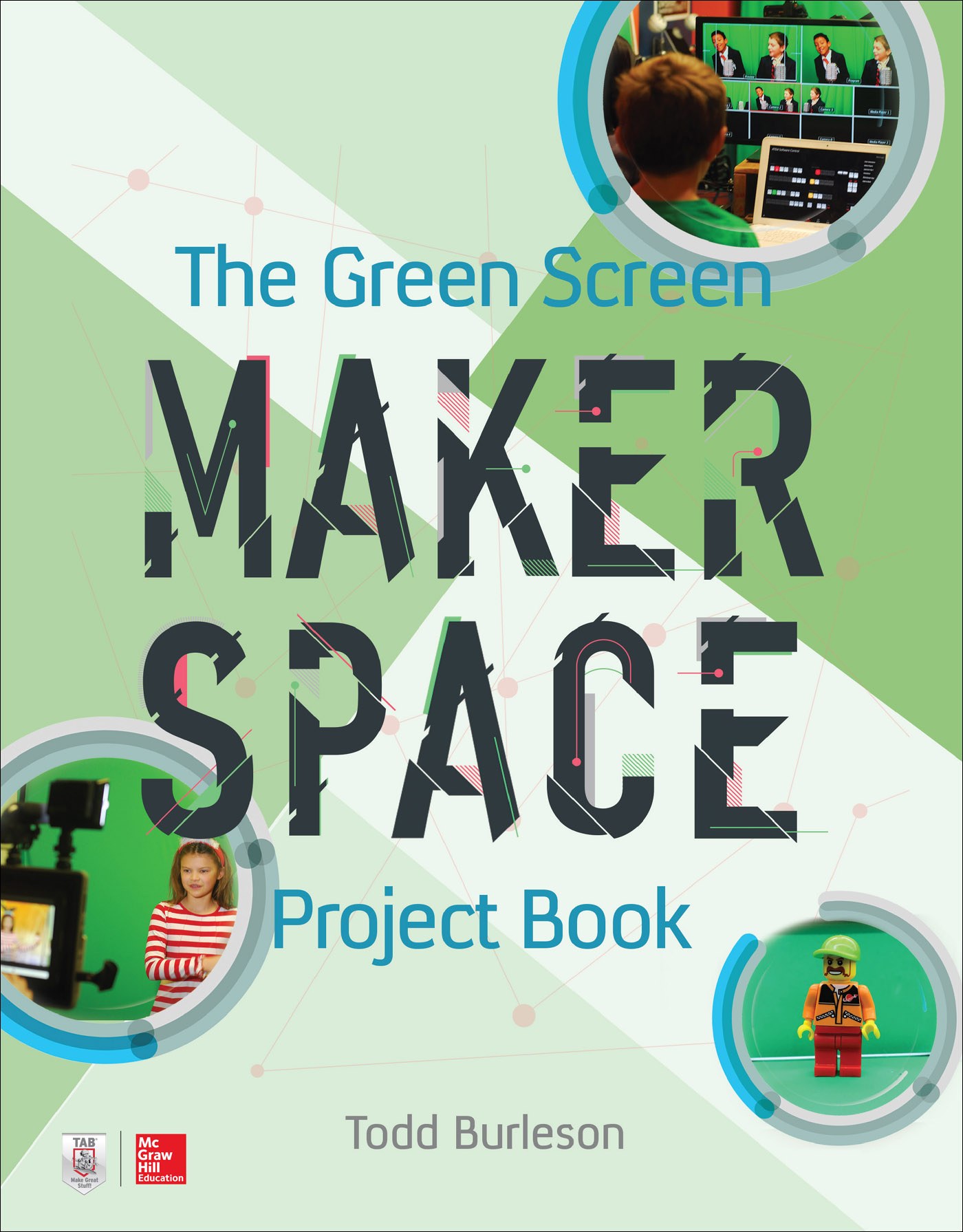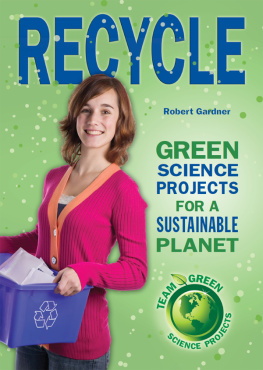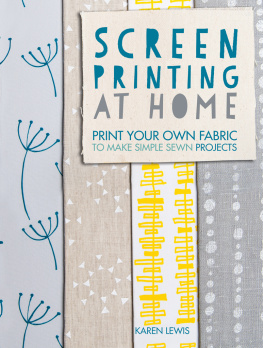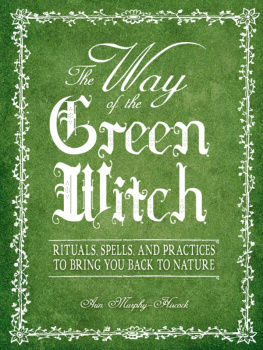Contents
Guide
Page List

About the Author
Todd Burleson is a teacher-maker-librarian in Winnetka, Illinois. He was chosen as the 2016 School Library Journals School Librarian of the Year, and he has had the good fortune to present and speak throughout the world. He is passionate about finding a balance between books and bytes and helping children become real world problem solvers.

Copyright 2018 by McGraw-Hill Education. All rights reserved. Except as permitted under the United States Copyright Act of 1976, no part of this publication may be reproduced or distributed in any form or by any means, or stored in a data base or retrieval system, without the prior written permission of the publisher.
ISBN: 978-1-260-01995-7
MHID: 1-260-01995-0
The material in this eBook also appears in the print version of this title: ISBN: 978-1-260-01996-4, MHID: 1-260-01996-9.
eBook conversion by codeMantra
Version 1.0
All trademarks are trademarks of their respective owners. Rather than put a trademark symbol after every occurrence of a trademarked name, we use names in an editorial fashion only, and to the benefit of the trademark owner, with no intention of infringement of the trademark. Where such designations appear in this book, they have been printed with initial caps.
McGraw-Hill Education eBooks are available at special quantity discounts to use as premiums and sales promotions or for use in corporate training programs. To contact a representative, please visit the Contact Us page at www.mhprofessional.com.
TERMS OF USE
This is a copyrighted work and McGraw-Hill Education and its licensors reserve all rights in and to the work. Use of this work is subject to these terms. Except as permitted under the Copyright Act of 1976 and the right to store and retrieve one copy of the work, you may not decompile, disassemble, reverse engineer, reproduce, modify, create derivative works based upon, transmit, distribute, disseminate, sell, publish or sublicense the work or any part of it without McGraw-Hill Educations prior consent. You may use the work for your own noncommercial and personal use; any other use of the work is strictly prohibited. Your right to use the work may be terminated if you fail to comply with these terms.
THE WORK IS PROVIDED AS IS. McGRAW-HILL EDUCATION AND ITS LICENSORS MAKE NO GUARANTEES OR WARRANTIES AS TO THE ACCURACY, ADEQUACY OR COMPLETENESS OF OR RESULTS TO BE OBTAINED FROM USING THE WORK, INCLUDING ANY INFORMATION THAT CAN BE ACCESSED THROUGH THE WORK VIA HYPERLINK OR OTHERWISE, AND EXPRESSLY DISCLAIM ANY WARRANTY, EXPRESS OR IMPLIED, INCLUDING BUT NOT LIMITED TO IMPLIED WARRANTIES OF MERCHANTABILITY OR FITNESS FOR A PARTICULAR PURPOSE. McGraw-Hill Education and its licensors do not warrant or guarantee that the functions contained in the work will meet your requirements or that its operation will be uninterrupted or error free. Neither McGraw-Hill Education nor its licensors shall be liable to you or anyone else for any inaccuracy, error or omission, regardless of cause, in the work or for any damages resulting therefrom. McGraw-Hill Education has no responsibility for the content of any information accessed through the work. Under no circumstances shall McGraw-Hill Education and/or its licensors be liable for any indirect, incidental, special, punitive, consequential or similar damages that result from the use of or inability to use the work, even if any of them has been advised of the possibility of such damages. This limitation of liability shall apply to any claim or cause whatsoever whether such claim or cause arises in contract, tort or otherwise.
Contents
Foreword
I MET TODD BURLESON at the EdTech Summit in Boston in 2015. I was demonstrating our newly released Green Screen by Do Ink app for the iPad and iPhone. Todd is a former third and fourth grade classroom teacher who a year after our meeting was named the 2016 School Librarian of the Year. This award is given by the School Library Journal and sponsored by Scholastic Library Publishing to honor K12 school library professionals for outstanding achievement and the exemplary use of 21st-century tools to engage students toward fostering multiple literacies. Todds book, The Green Screen Makerspace Project Book, reflects his passion for learning and is a wonderful introduction to green screening. Its a compilation of authentic classroom projects that will help you get started with green screening and spur your imagination as to all the ways green screening can be used to engage students.
You know what a green screen effect is, right? Its used in the movies to make it look like the actors have landed on an alien planet, and its used on television to make it look like your local news announcer is standing in front of a weather map. The green screen effect works by combining images from multiple sources into a single video or photo. The genesis of our Green Screen by Do Ink app came from a teacher at EdCamp Boston in 2013who mentioned a need for an easy-to-use green screen app. She wanted to teach a weather segment and needed the app to be easy enough for her second grade students to use. As cofounder of Do Ink, an educational app company, I recognized the need to involve teachers early in our development process and to test the results in classrooms. This input was invaluable. We launched our Green Screen by Do Ink app, and two weeks after its launch, Apple selected it as a Best New App in Education. Fast forward four years, and we were amazed at the endless ways green screening is used in classrooms throughout the world.
Green screening used to be difficult and time-consuming and required expensive equipment. Now it can be done without fancy studio setups using inexpensive software on tablets, phones, and computers. Green fabric, green tablecloths, green-painted pizza boxes and trifolds, green file folders, and even green Play-Doh have been used as green screens to great success in the classroom. The popularity of green screens in the classroom is due to the fact that they immerse students in their learning. One minute they can be in China on the Great Wall and the next, exploring the moon.
This book is a wonderful introduction to using green screens in education and illustrates with sample projects ways it can be used in twenty-first-century classrooms. I hope this book will inspire you to try green screening because it is a fun and innovative way for students to be creative and to communicate their learning because it promotes student collaboration, critical thinking, and problem solving.
Karen Miller
Cofounder of Do Ink
Acknowledgments
WRITING A BOOK CAN BE both a communal and solitary undertaking. To that end I would like to thank some of the folks who have been a part of this process. I couldnt have even begun this process without Colleen and Aaron Graves. They recommended me to my editor Michael McCabe because of my experience working in our school television studio and with a variety of green screen technology. I am grateful to them nudging me to create this book. Michael McCabe, my editor, has been incredibly patient and supportive of me as a new author. Thank you to the phenomenal educators who helped generate ideas for this book. Some of them didnt make it into the book with specific projects, but their shared wisdom was essential. Thank you to each of them: Billy Spicer, April Wathen, Madonna Marks, Sarah Guillen, and Sherry Gick. Thank you to the administrators in my district who have encouraged and supported my work, specifically to principals Maureen Cheever, Daniel Ryan and Beth Carmody, tech director Maureen Miller, and Superintendent Dr. Trisha Kocanda. Most importantly, I want to thank my family for putting up with me spending countless hours away from them while writing this book.






